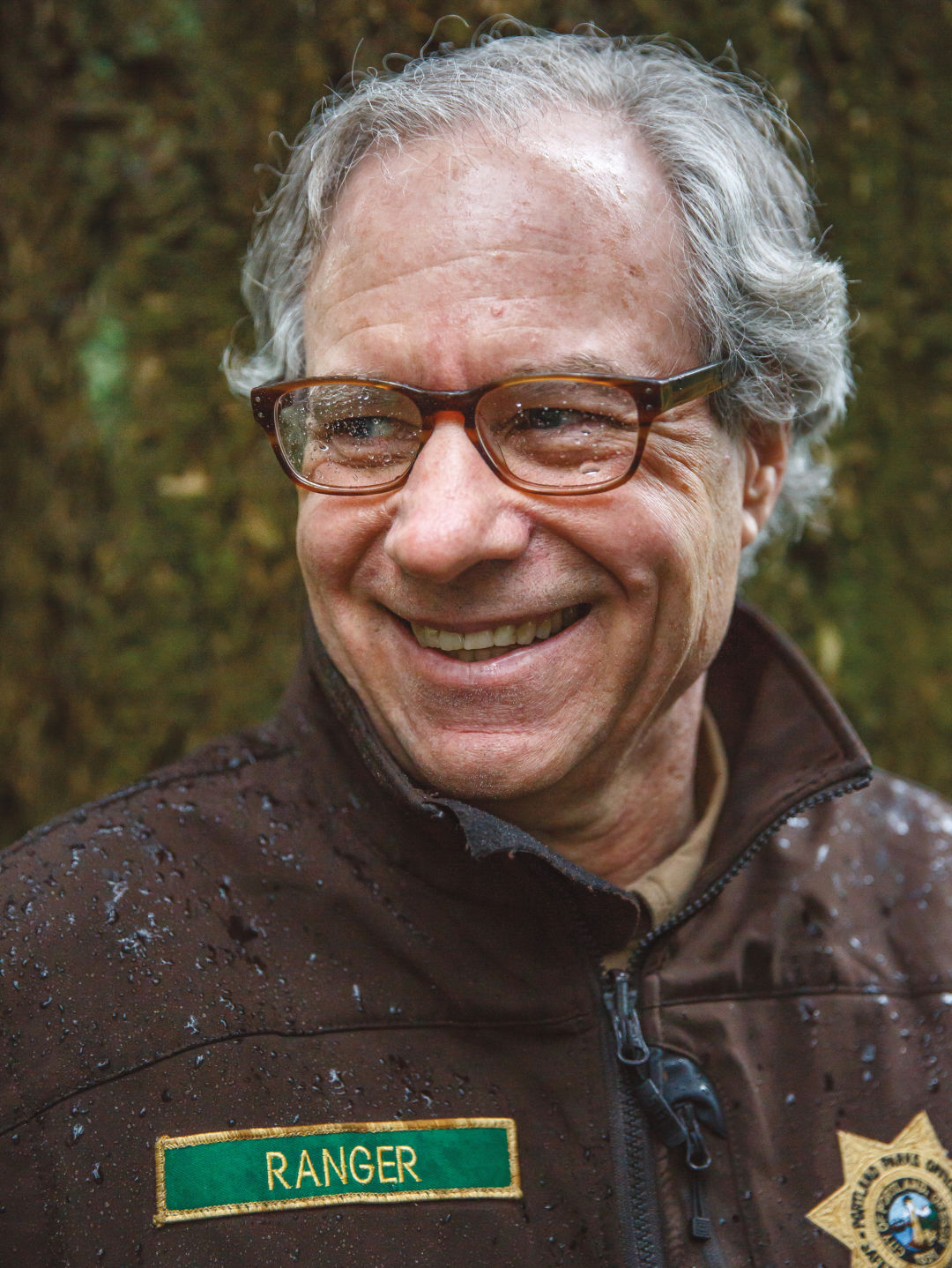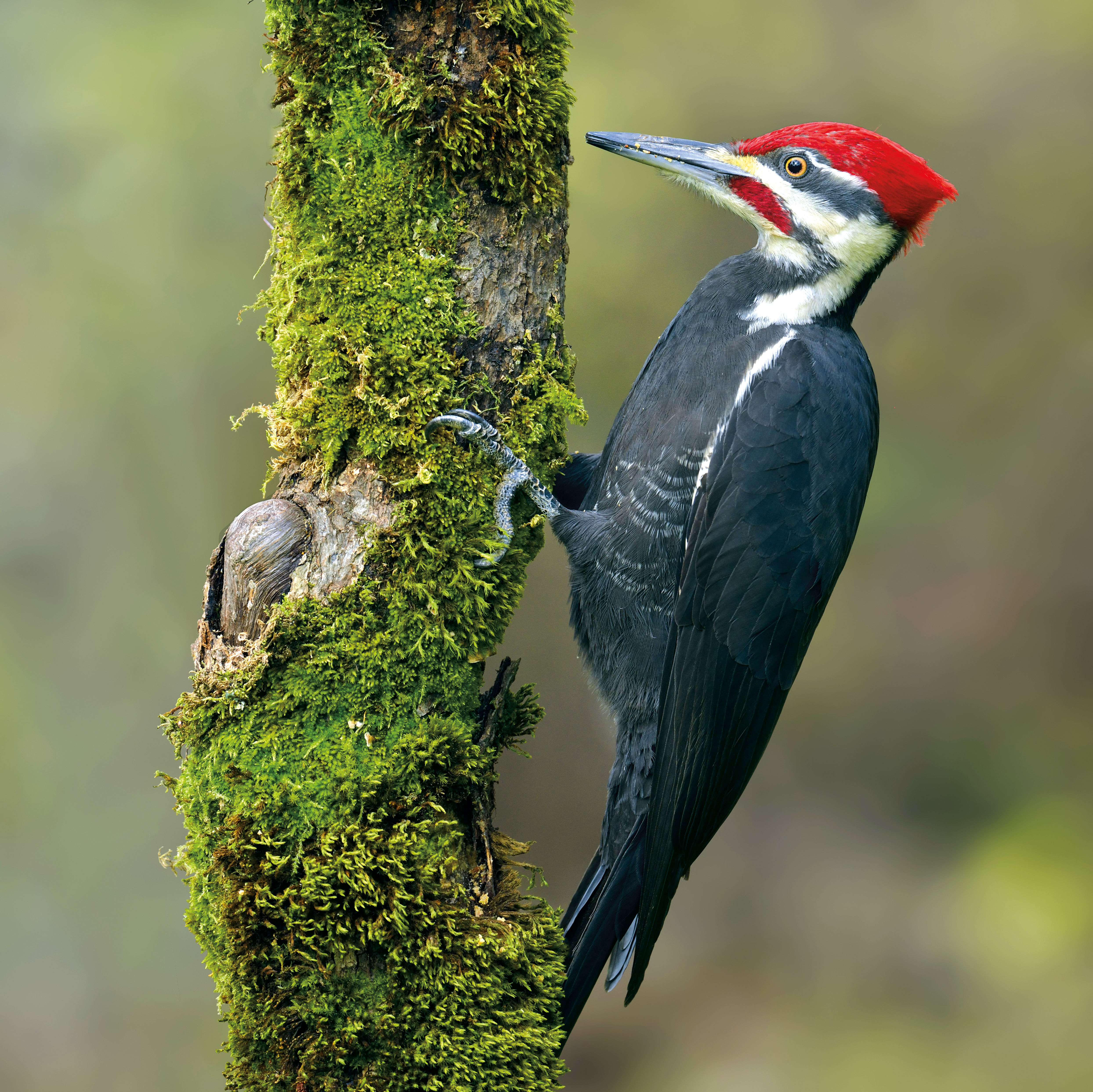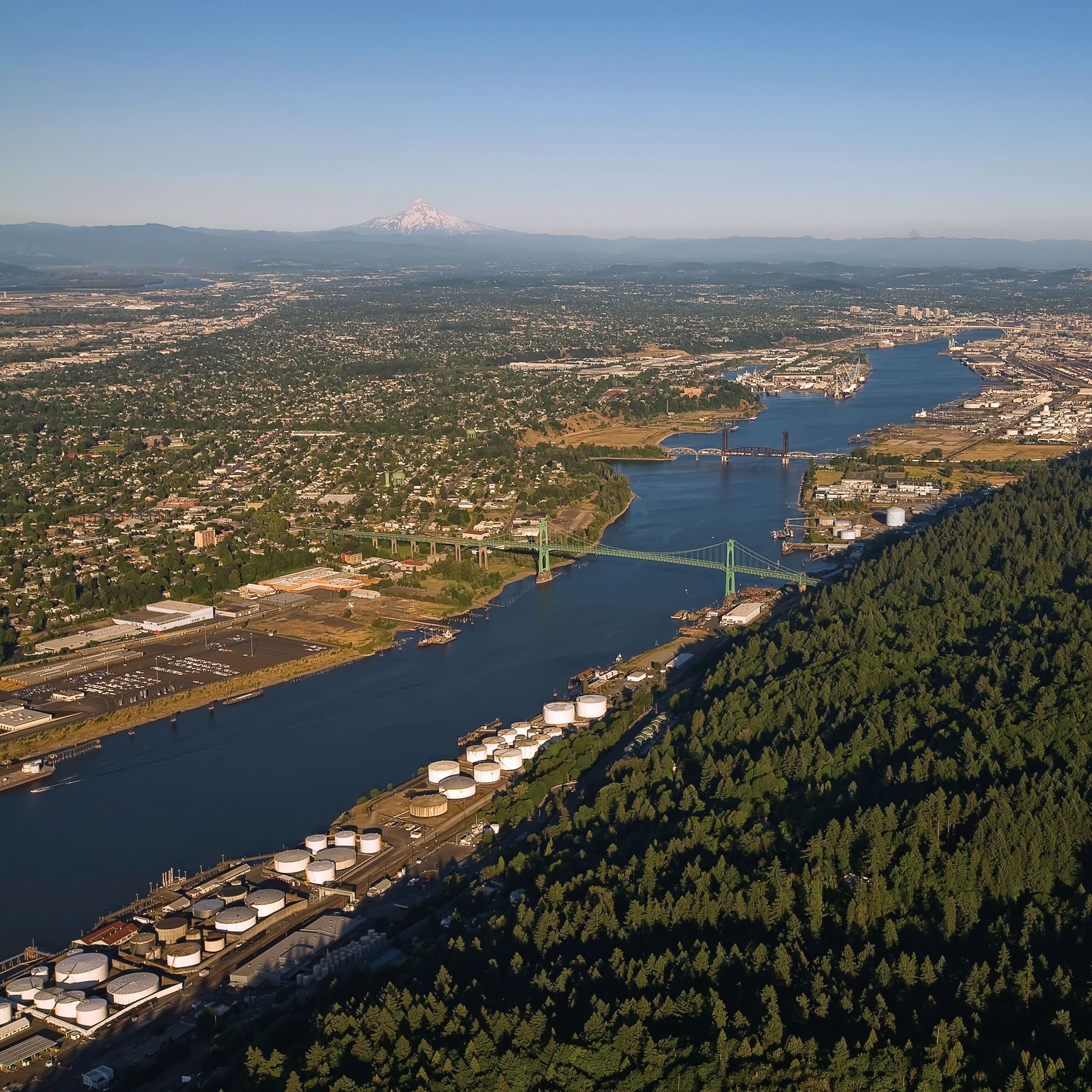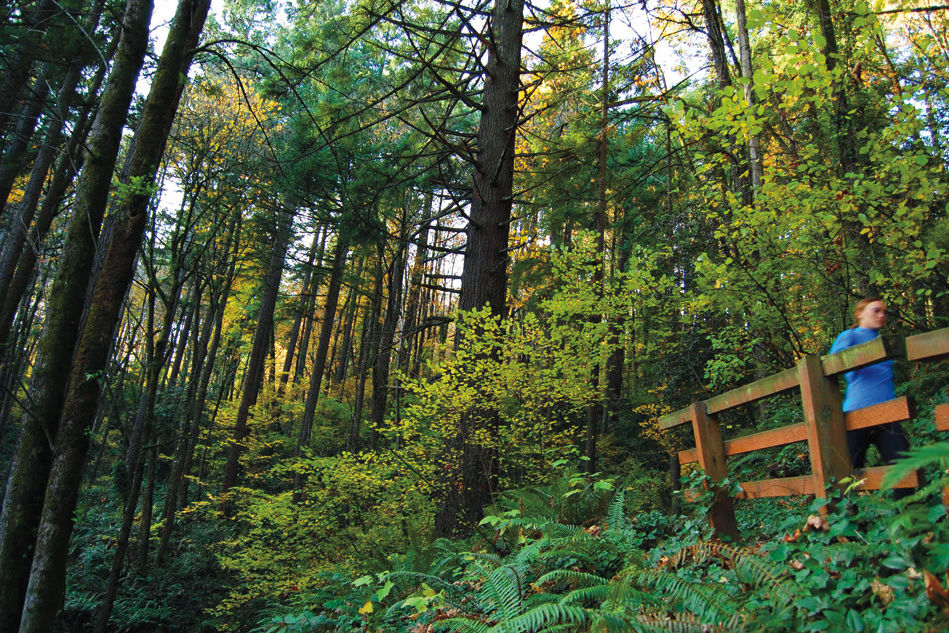Meet Bob McCoy, Forest Park's Lone Ranger

"If you had asked me as a kid what I wanted to be, I would’ve said either a shortstop for the Baltimore Orioles, a cowboy, or a park ranger—I watched Lassie."
Image: Stuart Mullenberg
In 2010, Bob McCoy became Forest Park’s first and only full-time ranger. One man for 5,000 acres might not sound like much, but it was monumental for the park, which had been officially crying for boots on the ground since the city’s parks and planning bureaus published their pivotal Forest Park Management Plan in 1995. When we interviewed the Kevin Spacey look-alike in 2011 for our first Forest Park issue, he brimmed with rookie optimism. He’d already worked for the parks bureau part-time for five years—before that, he was a Philadelphia-based editor and book publisher. In his new post, McCoy unwittingly became a powerful symbol for order in Portland’s signature greenspace. “I can’t change people,” he said back then, referring to the park’s rampant off-leash dogs and hurtling mountain bikers, “but I can help shape an experience in the park. And I can set them on the right path.” After six years patrolling Forest Park’s interior, McCoy, 62, has a different perspective.
ONE THING I DID in my first five years as ranger was count the number of people I saw. Every year it was about the same: 7,500. I thought I was seeing a tremendous number. Then the recreational use survey came out saying there are approximately 500,000 visits a year. I’m barely scratching the surface. While I’m walking a quarter mile, there are 79.75 miles where something else is going on. It’s a little disappointing to know that at one point I was naively thinking “‘I’m having a profound effect on most of the visitors in the park.’” If profound change is going to come—to be highfalutin—it’ll be in the consciousness of our community.
IF YOU HAD ASKED ME as a kid what I wanted to be, I would’ve said either a shortstop for the Baltimore Orioles, a cowboy, or a park ranger—I watched Lassie. It wasn’t the classic idea of a park ranger out on the side of a mountain; it was walking through Laurelhurst or Gabriel Park and doing urban park rangering. I had a talent; I could talk to people. It was a great antidote for city living.
FOREST PARK has a subset of the homeless population that is comfortable going into the woods. They tend to be rather mild, strangely enough. They ring the areas where they can get out to services, because you can’t just stock up on a year of supplies and go live in the woods. The north end of the park sees fewer campers than the south. There isn’t even a convenience store out there. At the south end, you step outside the forest and you’re in Northwest Industrial. Whether it’s beer, coffee, or cigarettes, humans are pretty predictable.
OVER THE COURSE of six years, I’ve moved something like 500, 600 camps, almost all one person, almost always men. I’m gonna guess that every year there are around 20 that I don’t know about. We just can’t do it all the time. It means deploying other rangers from other important responsibilities. I go when it’s safe for me, where I can avoid getting an ax in the foot. You don’t know if they’ve been moved 18 times and you’re the 19th person. There are times when I’m not heartbroken to move homeless people; there are times when I really am. Sometimes I’m accused of being soft-hearted, though I don’t think that’s a criticism.
THERE WAS THIS KID. He was maybe 20 or 23. He’d been on his own since he was about 15, and living in the forest a long time; he told me it was years. He was a leftover from the age where we didn’t have a full-time ranger. I found his tipi structure very, very far in, not close to any trail system. It was like a tiny house: he had built wooden chairs, bookshelves, a makeshift woodstove.... There was no dirt on the floor. He was a very nice kid, well-spoken and polite. I was astounded by his bookshelf. He had like a hundred books. Not pop culture crap—we’re talking Hemingway, Dickens. It took us weeks to clear his camp out. It can be a hellacious job.
THERE’S NOTHING really exotic in the park. There’s a lot of lore out there. There are no bobcats, no wolves, no cougars. The last bear sighting was in the 1980s. There are elk that occasionally wander in from the Coast Range. Mostly I see a lot of coyotes. I think it’s wonderful. They’ll eat your cat, but they’re not dangerous ... they’re not gonna snatch a baby.










